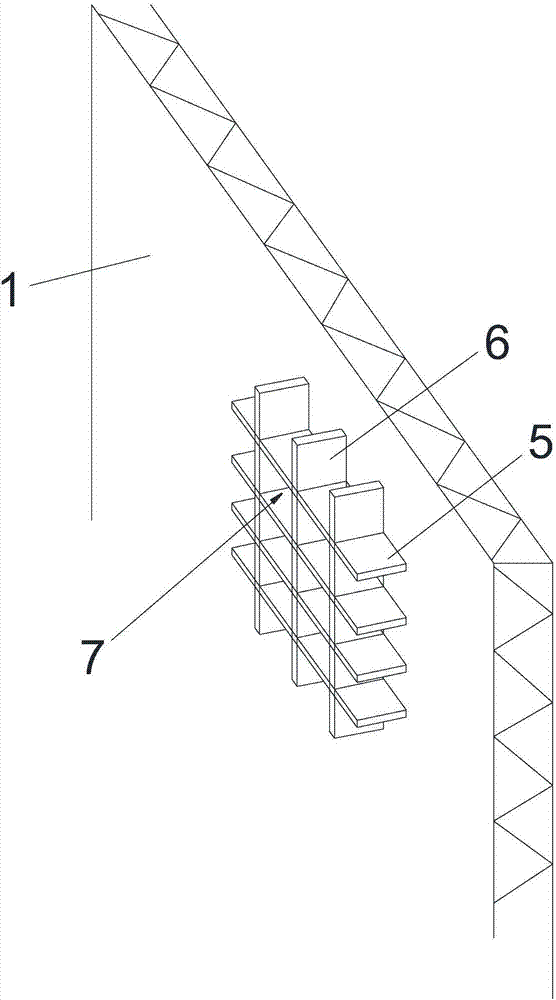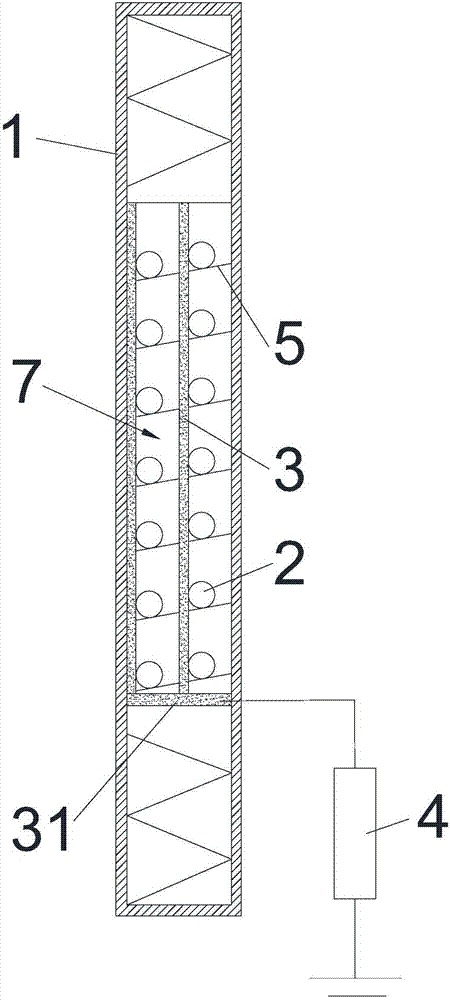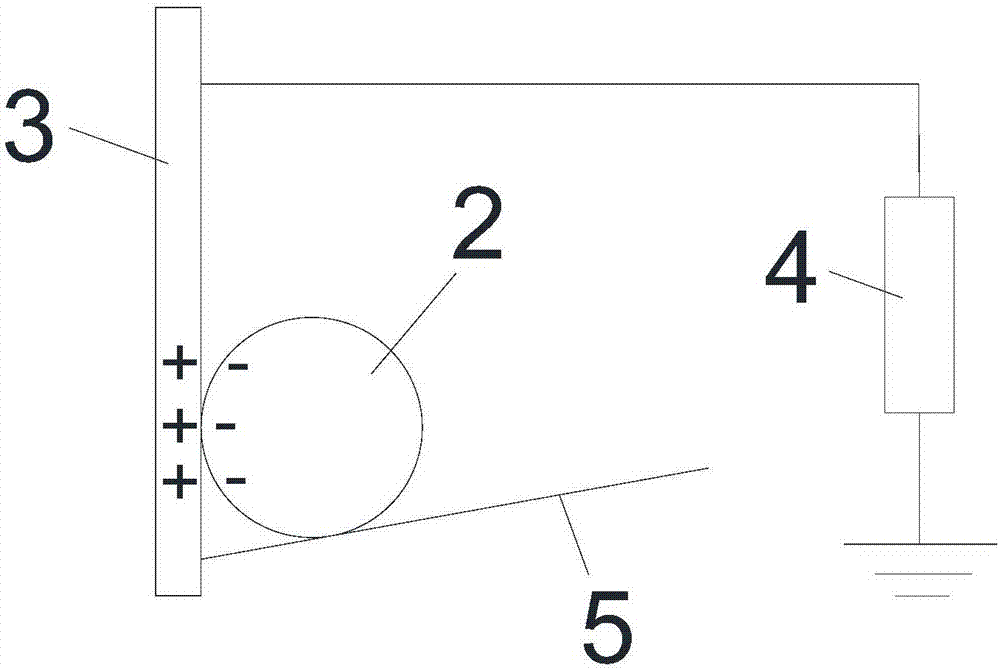Sound insulation barrier with self-power-generation function
A sound insulation barrier and self-generating technology, applied in the direction of generators/motors, piezoelectric effect/electrostrictive or magnetostrictive motors, electrical components, etc., can solve the problem of increasing investment and operating costs, and failure of sound insulation barriers To reduce the cost of operation and maintenance, eliminate hidden dangers, and reduce the single amplitude
- Summary
- Abstract
- Description
- Claims
- Application Information
AI Technical Summary
Problems solved by technology
Method used
Image
Examples
Embodiment 2
[0042] A sound insulation barrier with self-generating power in this embodiment differs from Embodiment 1 only in that: the contact electrification part 3 includes a second contact electrification part that contacts and separates from the first contact electrification layer to generate charge output. layer (not shown in the drawings), and an electrode capable of inducting charges generated when the first contact electrification layer and the second contact electrification layer are electrically contacted. The electrodes are sensing electrodes, preferably metal electrodes.
[0043] Specifically, the second contact electrification layer is a film attached on the electrode surface, and the film is a polymer material, aluminum foil or copper foil, preferably a polymer material. The polymer material is preferably polytetrafluoroethylene (PTFE), fluorinated ethylene propylene copolymer (FEP) or polyimide (Kapton). The first contact electrification layer can be made of polymer mater...
PUM
 Login to View More
Login to View More Abstract
Description
Claims
Application Information
 Login to View More
Login to View More - R&D
- Intellectual Property
- Life Sciences
- Materials
- Tech Scout
- Unparalleled Data Quality
- Higher Quality Content
- 60% Fewer Hallucinations
Browse by: Latest US Patents, China's latest patents, Technical Efficacy Thesaurus, Application Domain, Technology Topic, Popular Technical Reports.
© 2025 PatSnap. All rights reserved.Legal|Privacy policy|Modern Slavery Act Transparency Statement|Sitemap|About US| Contact US: help@patsnap.com



